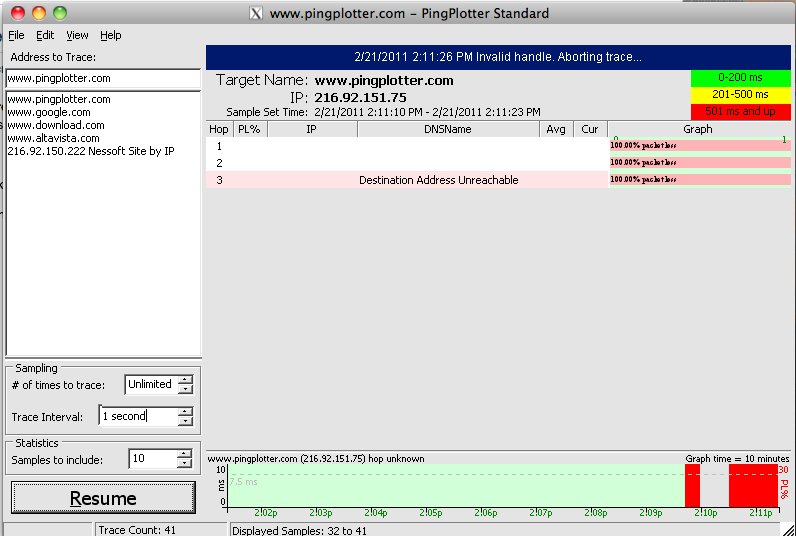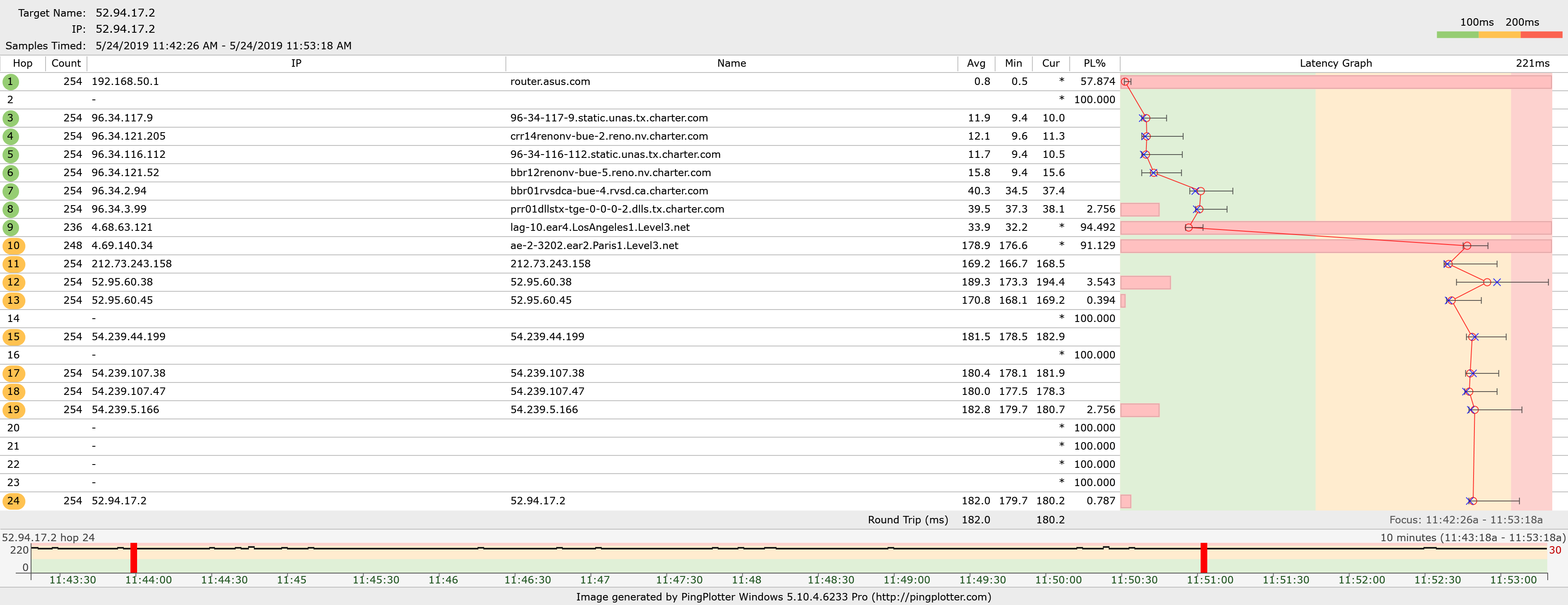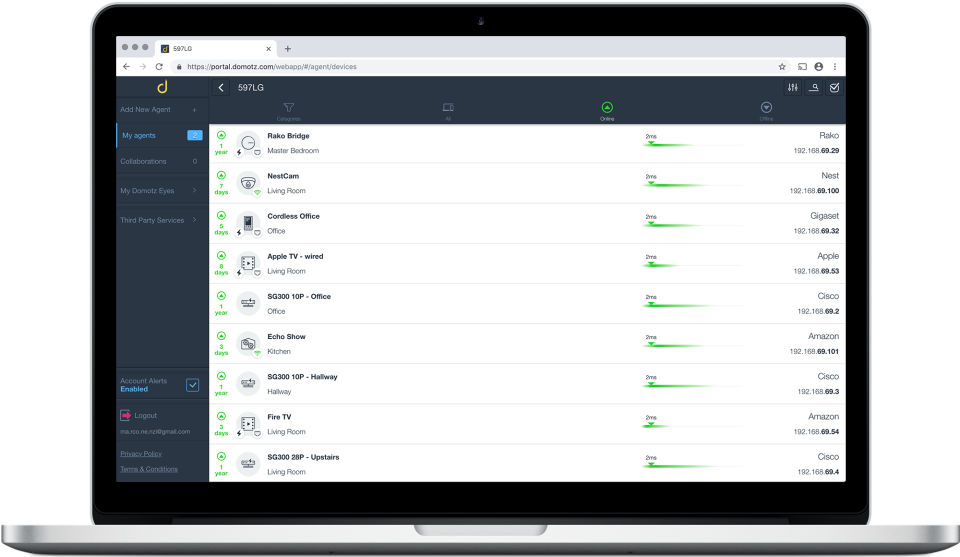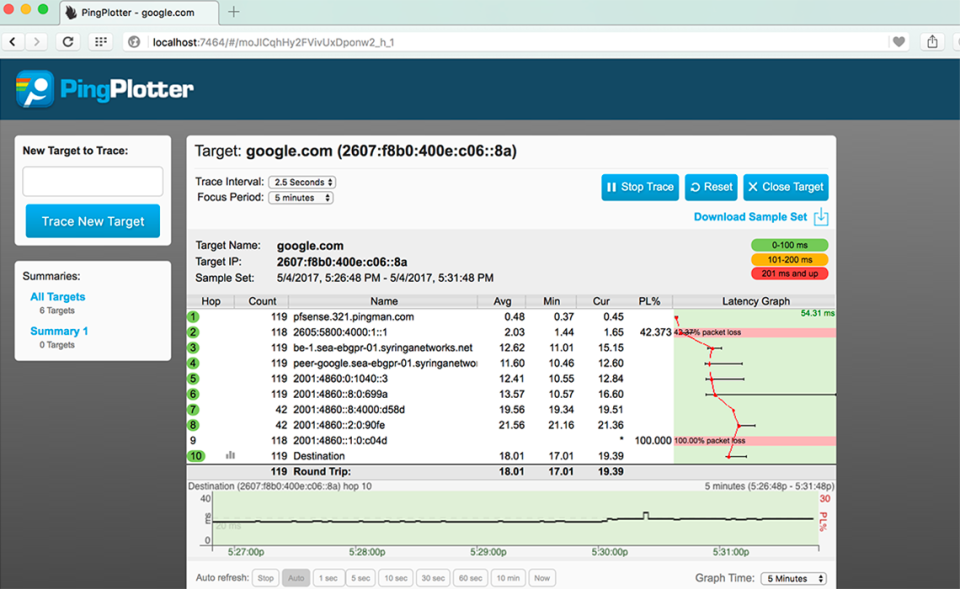

- #PINGPLOTTER LINUX INSTALL#
- #PINGPLOTTER LINUX UPDATE#
- #PINGPLOTTER LINUX SERIES#
- #PINGPLOTTER LINUX FREE#
- #PINGPLOTTER LINUX WINDOWS#
Next, send a set of datagrams with a longer length, by selecting Edit -> Advanced Pingplotter window that looks something like this: Select the menu item Edit -> Advanced Options -> Packet Options and enter a value of 56 in the Packet Size field and then press OK. Enter 3 in the # of times to Trace field, so you don’t gather too much data. Target destination in the Address to Trace window.
#PINGPLOTTER LINUX WINDOWS#
On Windows at home: If you are using a Windows platform, start up pingplotter and enter the name of a. Start up Wireshark and begin packet capture ( Capture -> Start) and then press OK on the Wireshark Packet Capture Options screen (we’ll not need to select any options here). 
For example, to send traceroute datagrams of 2000 bytes towards gaia.cs., the command would be: Linux/Unix/MacOS: With the Unix/MacOS traceroute command, the size of the UDP datagram sent towards the destination can be explicitly set by indicating the number of bytes in the datagram this value is entered in the traceroute command line immediately after the name or address of the destination.Number of intervals can be explicitly set in pingplotter. The increasing TTL values, it restarts the sending process again with a TTL of 1,Īfter waiting Trace Interval amount of time.
#PINGPLOTTER LINUX SERIES#
Once pingplotter has sent a series of packets with Request message can be explicitly set in pingplotter by selecting the menu itemĮdit -> Options -> Packet Options and then filling in the Packet Size field. Performing a few traceroutes to your favorite sites.

#PINGPLOTTER LINUX INSTALL#
Download and install pingplotter, and test it out by
#PINGPLOTTER LINUX FREE#
Program is pingplotter, available both in free version and shareware versions at ( ping) message sent by the tracert program.

With Windows does not allow one to change the size of the ICMP echo request
Windows: The tracert program (used for our ICMP Wireshark lab) provided. However, you are free to capture a live trace from your own computer at home. Note: In this lab you will analyze an already captured trace. We’ll want to run traceroute and have it send datagrams of various lengths. Routers between itself and destination X by looking at the source IP addresses in theĭatagrams containing the ICMP TTL-exceeded messages. In this manner, the host executing traceroute can learn the identities of the As a result of this behavior, a datagram with a TTL of 1 (sent by the host executing traceroute) will cause the router one hop away from the sender to send an ICMP TTL-exceeded message back to the sender the datagram sent with a TTL of 2 will cause the router two hopsĪway to send an ICMP message back to the sender the datagram sent with a TTL of 3 will cause the router three hops away to send an ICMP message back to the sender and If the TTL reaches 0, the router returns an ICMP message (type 11 – TTL-exceeded) to the sending host. Router must decrement the TTL by at least one). Recall that a router mustĭecrement the TTL in each received datagram by 1 (actually, RFC 791 says that the Traceroute operates by first sending one or more datagrams with the time-to-live (TTL) field in the IP header set to 1 it then sends a series of one or more datagrams towards the same destination with a TTL value of 2 it then sends a series of datagrams towards the same destination with a TTL value of 3 and so on. In order to generate a trace of IP datagrams for this lab, we’ll use the traceroute program to send datagrams of different sizes towards some destination, X. It is important that you carefully read the instructions such that you provide answers in the desired format(s).Ĭapturing packets from an execution of traceroute In this assignment, you will be asked to answer and/or discuss a number of questions. You’ll also want to read Section 4.3 in the book, and probably also have RFC 791 on hand as well, for a discussion of the IP protocol. #PINGPLOTTER LINUX UPDATE#
We’ll investigate the various fields in the IP datagram, and study IP fragmentation in detail.īefore beginning this lab, you’ll probably want to review sections 1.4.3 in the course text book and section 3.4 of RFC 2151 to update yourself on the operation of the traceroute program. We’ll do so by analyzing a trace of IP datagrams sent and received by an execution of the traceroute program. In this lab, we’ll investigate the IP protocol, focusing on the IP datagram.
Capturing packets from an execution of traceroute. Last updated August 2020 (based on v8.0). This lab assignment is based on "Wireshark Lab:








 0 kommentar(er)
0 kommentar(er)
